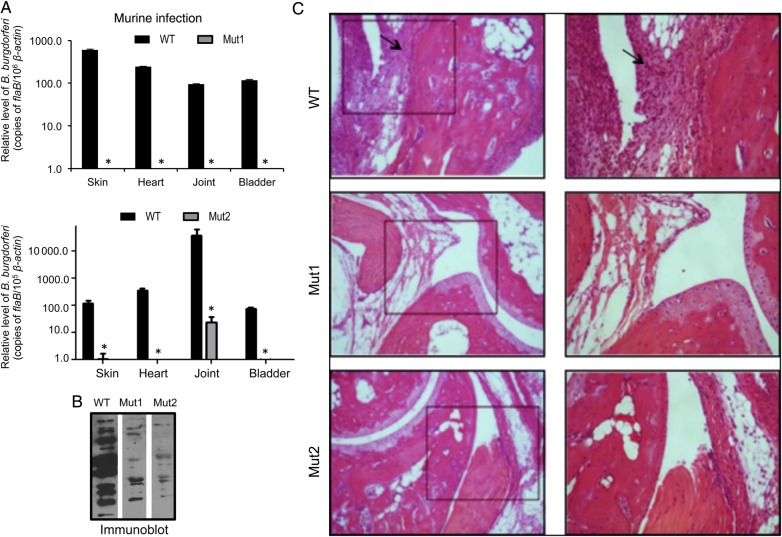Figure 3.
bb0405 deletion impairs ability of Borrelia burgdorferi to persist in mice and cause disease. A, bb0405 deletion dramatically reduces the ability of B. burgdorferi to persist in mice. Animals (3 mice/group) were infected with wild type (WT; black bars) or either of the 2 bb0405 mutants Mut1 (gray bars; upper panel) or Mut2 (gray bars; lower panel). Pathogen levels were analyzed in skin, heart, joint, and bladder samples by measuring copies of B. burgdorferi flaB transcripts at 20 days of infection by quantitative polymerase chain reaction, and data were normalized against murine ß-actin levels. bb0405 mutants were either undetectable or persisted at levels significantly lower than those of corresponding WT pathogens (P < .05). B, bb0405 mutants are less infectious in mice, as assessed by serologic analysis. Serum samples from infected mice collected 14 days after infection were immunoblotted against B. burgdorferi lysate. C, Histopathological examination of the B. burgdorferi–infected murine joints. Mice were immunized with spirochetes, as detailed in Figure 3A, and joint samples were isolated after 14 days and subjected to histologic analysis. Left panel shows lower-resolution (original magnification ×10) images, and right panel reflects higher-resolution (original magnification ×20) images of selected areas from corresponding sections (box). Cellular infiltration is indicated by arrows.

